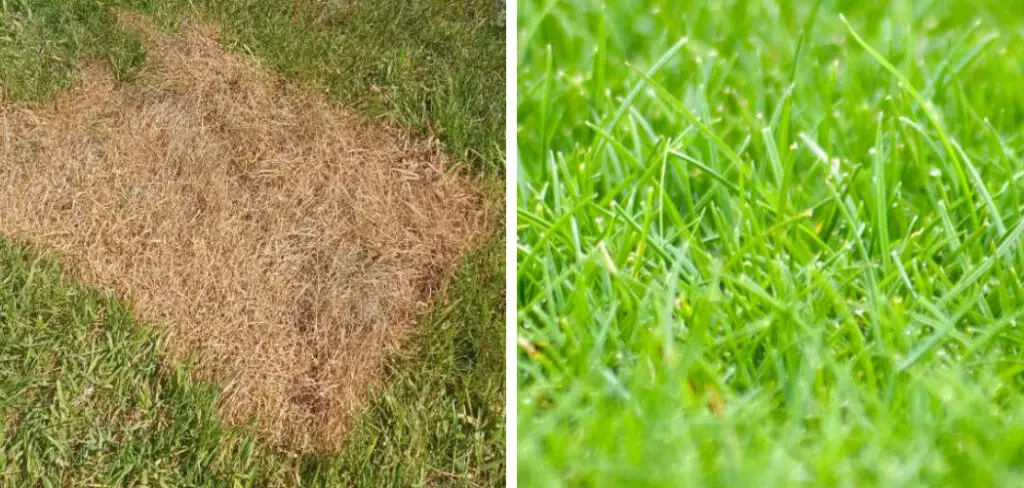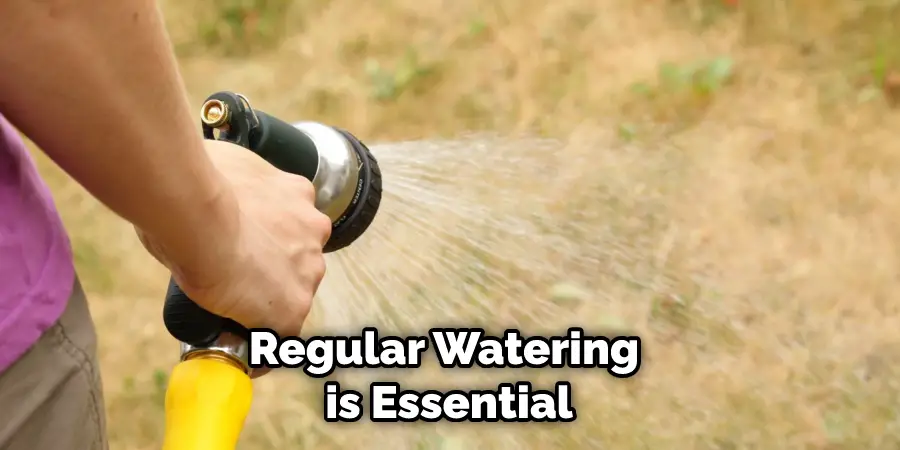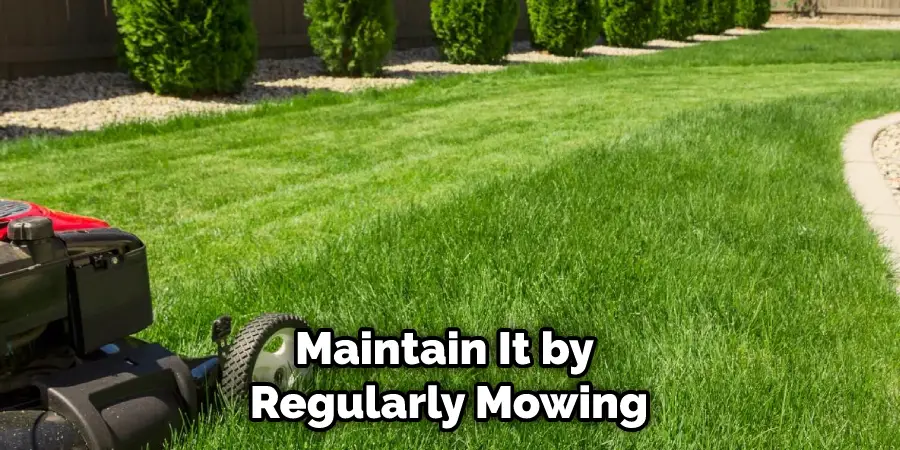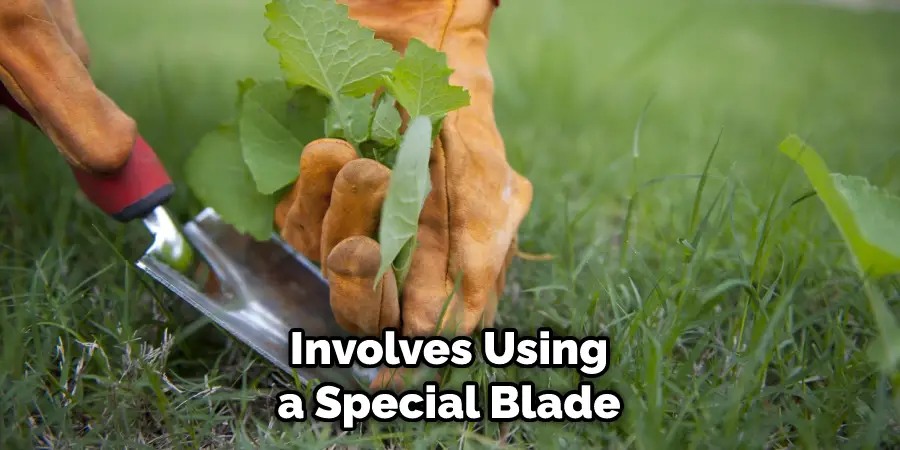The winter months can do a number on your lawn, leaving it looking brown and patchy. If you’re planning to entertain family and friends or want an aesthetically pleasing landscape, then you need to act fast!

Fortunately, reviving grass after winter doesn’t have to be a pipe dream; with some patience, the right tools and supplies, plus proper care and maintenance, you can get your green lawn back in no time.
In this blog post we’ll tackle how exactly how to revive grass after winter with these easy-to-follow tips.
How Long It Takes to Revive Grass after Winter
The time it takes for grass to revive after winter can vary depending on the type of grass, local climate, and soil conditions. Generally speaking. However, most warm-season grasses will begin to green up in early spring when temperatures reach 60°F or more.
Cool-season grasses usually start reviving in late February or early March when temperatures reach 45°F.
It may take a few weeks for the grass to fully revive after winter, and the amount of time could be lengthened if there is still snow or frost in the area. In these cases, it will take longer for the ground to thaw, allowing water to penetrate and nutrients to become available.
During this period, it may appear that your lawn has not been revived at all; however, patience is key as proper growing conditions should soon follow with warmer temperatures.
If you are looking to speed up the process of reviving your grass after winter, there are some steps you can take: apply fertilizer to your lawn once spring arrives; ensure proper drainage by aerating compacted soils; water deeply but infrequently; and mow your lawn at the correct height.
All of these steps will help ensure that your grass is healthy and ready to thrive once the temperatures rise.
By taking preventative measures, you can ensure that your lawn will be revived in a timely manner after winter.
With proper care, your grass should be fully revived and ready for the summer season. Enjoy the warmer months ahead!
10 Methods How to Revive Grass after Winter
1. Rake up Leaves and Debris
The first step in reviving your grass after winter is to rake up any leaves or debris that have accumulated on the lawn. This will help to ensure that the grass can get the sunlight and air it needs to grow.

If you have a heavy layer of leaves, you may need to rake in multiple passes until the lawn is clear. Be sure to remove as much debris as possible, as this can inhibit grass growth.
2. Aerate the Soil
Aerating the soil will also help to revive your grass after winter. This process involves making small holes in the soil so that air and water can reach the roots of the grass. Aeration can be done manually using a garden fork or aerator, or with a machine if you have access to one.
The goal is to make sure that the holes are evenly spaced throughout the area of grass. You may need to aerate more than once in order to get full coverage. After aerating, you can use a rake to spread soil over the holes and ensure that they are covered.
3. Apply a Thin Layer of Compost
Applying a thin layer of compost to your lawn will help to add nutrients back into the soil that may have been lost over the winter months. Compost will help to enrich the soil, allowing your grass to absorb more of the water and nutrients it needs.
It’s important not to use too much compost – a thin layer is best. Spread it evenly over the entire lawn and then rake it in lightly with a garden rake. This should replenish the soil enough for your grass to start growing again. However, if your soil is particularly poor, you may want to consider applying a thicker layer of compost.
You can also use nitrogen-rich fertilizer to help the grass revive. Be sure to follow the directions on the package when applying it. It’s important not to overfertilize as this can cause more harm than good.
4. Water Deeply and Regularly
Deep, regular watering is essential for reviving your grass after winter. Be sure to water the lawn early in the day so that the grass has time to dry before nightfall. Watering in the morning will also help reduce evaporation.
During the first few weeks of spring, water the grass between 1-1/2 and 2 inches per week.

This can be accomplished by water for about 20 minutes three times a week. As temperatures begin to rise and the weather becomes drier, you may need to increase your lawn’s watering frequency.
Make sure to check your soil’s moisture level often, as this can help you determine how much water the lawn needs. You also want to avoid over-watering, which can cause fungi and other diseases to thrive in your lawn.
5. Mow High
Mowing your lawn high (leaving the grass longer) will help to protect the roots of the grass and encourage new growth. The ideal mowing height for most grass types is 2.5 to 3 inches (6-7 cm). Keep in mind that during the spring, you should wait until the grass is at least 3 inches tall before mowing it.
Grass blades help protect the soil and trap moisture, so a long blade of grass is beneficial for lawn health. If your lawn is already too short, wait until it has grown to the appropriate height before mowing.
6. Fertilize with nitrogen-rich fertilizer
Applying a nitrogen-rich fertilizer to your lawn will help to promote new growth and revive your grass after winter. Make sure you read the instructions on the packaging for how much fertilizer to use.
Be careful not to over-fertilize, as too much nitrogen can burn your grass and cause further damage. Apply your fertilizer in the spring when temperatures are consistently above freezing and there is adequate rainfall.
If possible, avoid applying fertilizer during a drought or during excessively hot temperatures. Allow the fertilizer to sit on your lawn for at least 30 minutes before watering it in. This will ensure that the fertilizer is absorbed by the roots of your grass and not washed away.
7. Overseed Bare Spots

Overseeding bare spots on your lawn will help to fill in any areas where the grass has died back over winter. Be sure to use a quality seed mix that is suited to your climate and soil type. Spread the mix evenly over the bare areas, then rake it in lightly.
Water your lawn regularly to keep the seeds moist until they have sprouted and grown enough to become established. Once the grass is established, maintain it by regularly mowing and fertilizing it as needed. You may also need to aerate the soil to help give your lawn a healthy start.
8. Reseed Thin Areas
Thin areas of your lawn can also be revived by reseeding them with a quality seed mix. Be sure to rake out any dead grass before reseeding so that the new seedlings have a chance to take root. After spreading the seed, lightly water them and then keep the area moist but not overly saturated.
The new seedlings should begin to emerge in a few weeks. If not, consider applying a starter fertilizer to provide the seeds with the nutrients they need to germinate. With some TLC and patience, you can have a lush green lawn before you know it!
9. Vertical Mow
Vertical mowing is a great way to revive your grass after winter. This process involves using a special blade on your lawn mower that cuts the grass blades at an angle, which helps them to grow back thicker and stronger.

For best results, mow the grass at least twice in the same direction. This allows the new blades of grass to grow through and fill in any bare spots. Additionally, vertical mowing helps reduce compaction, which can damage your lawn over time.
10. Provide Shade and Protection
Providing some shade to your lawn during the summer months will help to protect it from the heat and revive any grass that may have been damaged over winter.
Additionally, adding a thick layer of mulch around trees and shrubs can also provide extra protection for the roots of your grass.
This will help to retain moisture and can also prevent weed growth. Lastly, avoid walking on a lawn that is still recovering from winter; this can damage the grass further and lead to more problems.
Conclusion
The key to having a green lawn again is to act quickly and start reviving your grass as soon as the weather starts warming up. By following these steps, you can make sure that your grass comes back healthy and strong after a long winter.
We hope this guide on how to revive grass after winter was helpful. Please share it with your friends on social media if you find it useful. And be sure to check back here soon for more informative guides like this one.
About
Outdoor Fixes is a distinguished figure in the world of Diy design, with a decade of expertise creating innovative and sustainable Diy solutions.
His professional focus lies in merging traditional craftsmanship with modern manufacturing techniques,
fostering designs that are both practical and environmentally conscious. As the author of diy,
outdoorfixes delves into the art and science of outdoorfixes-making, inspiring artisans and industry professionals alike.
Education RMIT University
(Melbourne, Australia) Associate Degree in Design (Outdoor Fixes) Focus on sustainable design, industry-driven projects,
and practical craftsmanship. Gained hands-on experience with traditional and digital manufacturing tools, such as CAD and CNC software.
Nottingham Trent University
(United Kingdom) Bachelor’s in outdoorfixes.com and Product Design (Honors) Specialized in product design with a focus on blending creativity with production
techniques. Participated in industry projects, working with companies like John Lewis and Vitsoe to gain real-world insights.
Publications and Impact
In diy, Outdoor Fixes his insights on indoor design processes, materials, and strategies for efficient production.
His writing bridges the gap between artisan knowledge and modern industry needs, making it a must-read for both budding designers and seasoned professionals.

